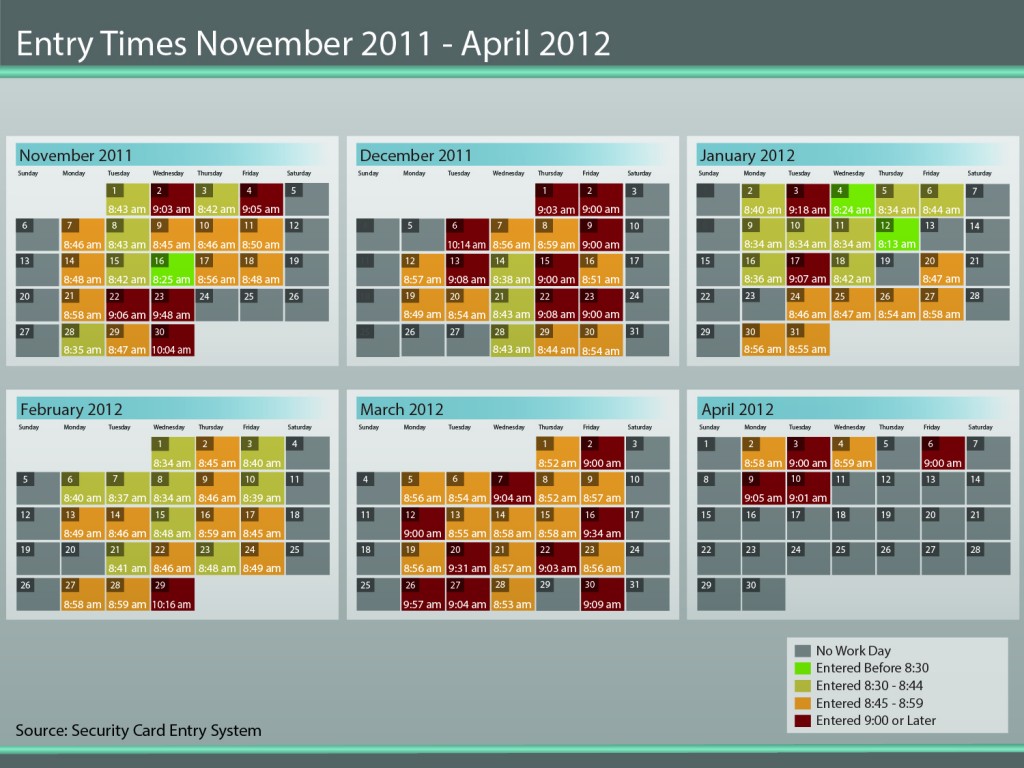 “I’ve had enough! You’re fired!”
“I’ve had enough! You’re fired!”
An employer who says this to an employee may later need to defend the termination decision in court. In today’s post, we’ll discuss graphics (adapted from a real case) that could be used to show that an employee was terminated because she was habitually late.
In our adapted hypothetical case, the employee was a manager who was required to be at work at 8:30 a.m. for a briefing with the outgoing team, and then to take over at 9:00 a.m. The plaintiff employee used a security card to get into the building, so evidence of her entry times was available.
The employer fired the employee after she was often late over a six month period. The employee claimed that she was not fired for tardiness, but rather for discriminatory reasons. She filed age and race discrimination claims under the California Fair Employment and Housing Act (Cal. Gov. Code § 12940).
Start With the Jury Instruction
In planning an opening or closing statement (and accompanying visual aids), it often helps to look to the jury instructions as these instructions will be the jury’s guide to deciding the case. California Civil Jury Instruction “CACI” 2500 instructs the jury that our hypothetical plaintiff must prove:
“That plaintiff’s race or age was a motivating reason for defendant’s decision to discharge plaintiff.”
This “motivating reason” is a core issue for the jury—because the employer wants to prove termination due to habitual lateness, presenting the security card entry times clearly is important.
Format Decisions: Calendar or Bar Chart? One Month or Multiple Months?
Our case had six months of monthly entry times that were potentially important. Presenting such a large amount of data requires careful planning. Trying to squeeze too much into a single graphic may make the graphic unreadable and confusing. On the other hand, breaking the data into many months may make it hard to communicate the “big picture,” and many require multiple distracting transitions.
Two choices that we considered were bar charts and monthly calendars. Below are treatments of the same month in bar chart and calendar format:
We tried these different visual treatments and tested them with a mock jury. While many on our team preferred a bar chart (in part because we could easily present six months of data in a single chart), we found that the mock jury understood a calendar format more readily.
The Big Picture Solution—Six Months at a Time
Our mock jury’s preference for calendar format was clear, but we needed a format that would allow the attorney to address the big picture of six months at a time. Our trial tech at the mock jury came up with a solution using Trial Director. He arranged pictures of the individual months so six months were showing at a time. We later converted his approach into an interactive six month calendar like the sample shown below that would allow zooming into any individual month.
For more ideas and advice on demonstratives in employment litigation, please see this earlier post and contact us if you have any questions.
If you’d like to receive updates from this blog, please click to subscribe by email.





